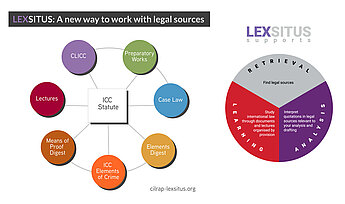Databases
Research
 Read more
Read more

Acceptance Online Platform
This platform is a repository of educational and research tools, openly published and addressed to a wide audience of academics and practitioners interested in understanding, researching and influencing the acceptance of international criminal justice.
Research
 Read more
Read more

International Criminal Law in Germany
Guidelines and manuals on digital evidence, significant for the documentation of human rights violations and core international crimes.
Other Resources
Research
 Read more
Read more

Documentary "Peace Through Justice"
In recognition of the life and work of Judge Thomas Buergenthal, the Nuremberg Academy has produced the documentary film “Peace Through Justice – The Legacy of Thomas Buergenthal”.
Research
 Read more
Read more

Resource Collection on the Nuremberg Principles
This Resource Collection on the Nuremberg Principles provides an overview of official documents, case law and scholarly literature.

